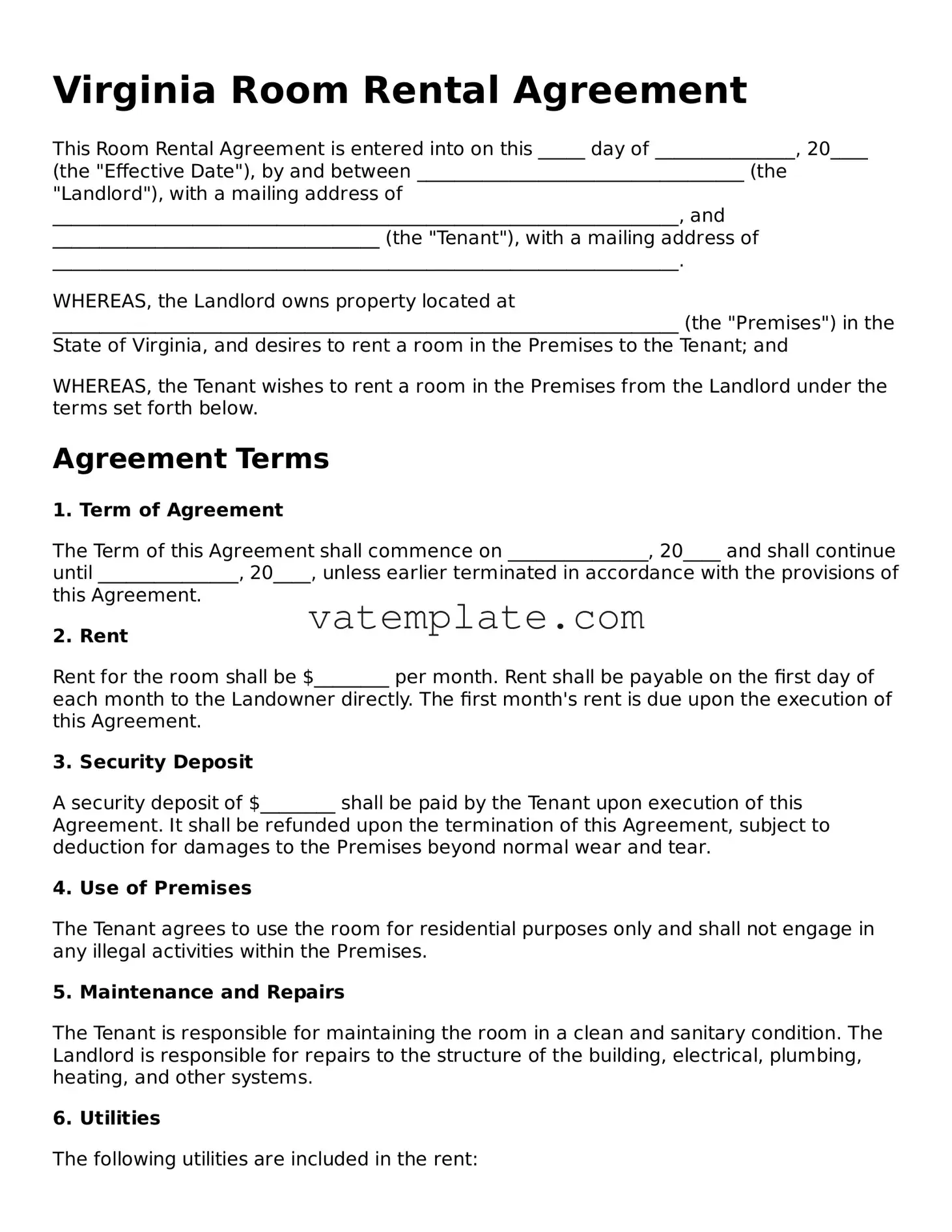Virginia Room Rental Agreement
This Room Rental Agreement is entered into on this _____ day of _______________, 20____ (the "Effective Date"), by and between ___________________________________ (the "Landlord"), with a mailing address of ___________________________________________________________________, and ___________________________________ (the "Tenant"), with a mailing address of ___________________________________________________________________.
WHEREAS, the Landlord owns property located at ___________________________________________________________________ (the "Premises") in the State of Virginia, and desires to rent a room in the Premises to the Tenant; and
WHEREAS, the Tenant wishes to rent a room in the Premises from the Landlord under the terms set forth below.
Agreement Terms
1. Term of Agreement
The Term of this Agreement shall commence on _______________, 20____ and shall continue until _______________, 20____, unless earlier terminated in accordance with the provisions of this Agreement.
2. Rent
Rent for the room shall be $________ per month. Rent shall be payable on the first day of each month to the Landowner directly. The first month's rent is due upon the execution of this Agreement.
3. Security Deposit
A security deposit of $________ shall be paid by the Tenant upon execution of this Agreement. It shall be refunded upon the termination of this Agreement, subject to deduction for damages to the Premises beyond normal wear and tear.
4. Use of Premises
The Tenant agrees to use the room for residential purposes only and shall not engage in any illegal activities within the Premises.
5. Maintenance and Repairs
The Tenant is responsible for maintaining the room in a clean and sanitary condition. The Landlord is responsible for repairs to the structure of the building, electrical, plumbing, heating, and other systems.
6. Utilities
The following utilities are included in the rent:
- Electricity
- Water
- Gas
- Internet
Any utility not listed above is the responsibility of the Tenant.
7. Governing Law
This Agreement shall be governed by and construed in accordance with the laws of the State of Virginia without regard to its conflict of laws principles.
Signatures
IN WITNESS WHEREOF, the Parties have executed this Room Rental Agreement as of the Effective Date first above written.
Landlord's Signature: _______________________________________ Date: ___________________
Tenant's Signature: _______________________________________ Date: ___________________
